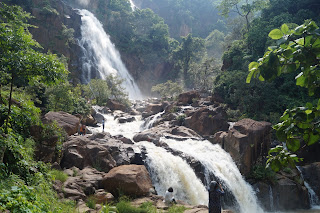The Nongkrem Dance Festival, celebrated by the Khasi tribe of Meghalaya, India, is a vibrant expression of their rich cultural heritage. Music plays a pivotal role in this festival, which is not only a celebration but also a religious ceremony that honors the tribe's deities. The festival features approximately 70 distinct musical tunes, each intricately woven into the fabric of the dance performances. The drummers, known as Dhulias, are particularly noteworthy, as they must master 32 specific rhythms that correspond to various aspects of the dance, ensuring that each performance is both synchronized and meaningful.
The musical instruments employed during the Nongkrem
Dance include cymbals, drums, and traditional bamboo pipes, which collectively
create a resonant soundscape that enhances the visual spectacle of the dance. The
most prominent tunes, such as "Sing Masteih," accompany the dancers
as they perform intricate movements that reflect the tribe's history and
traditions. The use of large drums, including the "nakra" and
"bom," is essential, as these instruments not only maintain the
rhythm but also add to the ceremonial atmosphere, particularly during the
ritualistic sacrifice of goats and chickens that takes place during the
festival.
The Nongkrem
Dance is characterized by its unique dance forms and styles, which are
performed in elaborate costumes that symbolize various elements of Khasi
culture. Each dance is a narrative, telling stories of the tribe's ancestry,
struggles, and triumphs. As the festival has evolved, it has retained its
traditional roots while also incorporating contemporary influences, making it a
living testament to the Khasi tribe's adaptability and resilience.
In essence, the Nongkrem Dance Festival is a
celebration of the Khasi tribe's artistic expression through music and dance.
It serves as a cultural signature that encapsulates their history, traditions,
and the enduring significance of community and spirituality in their lives.













